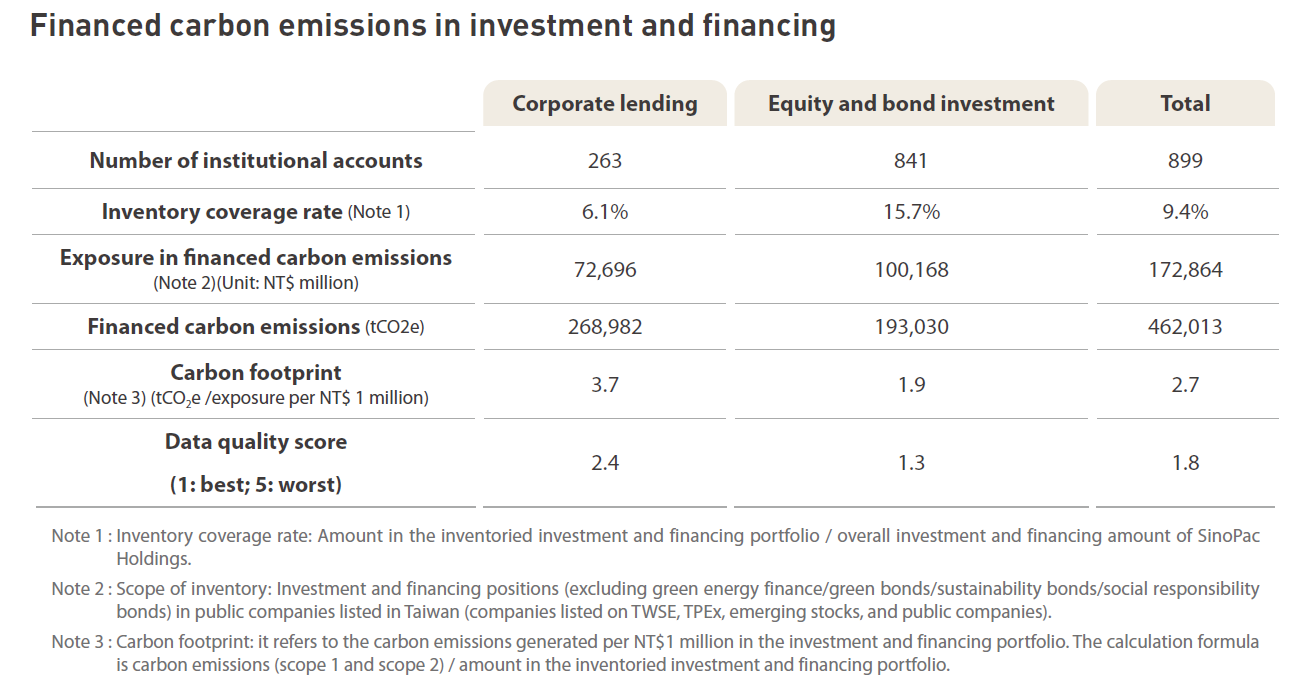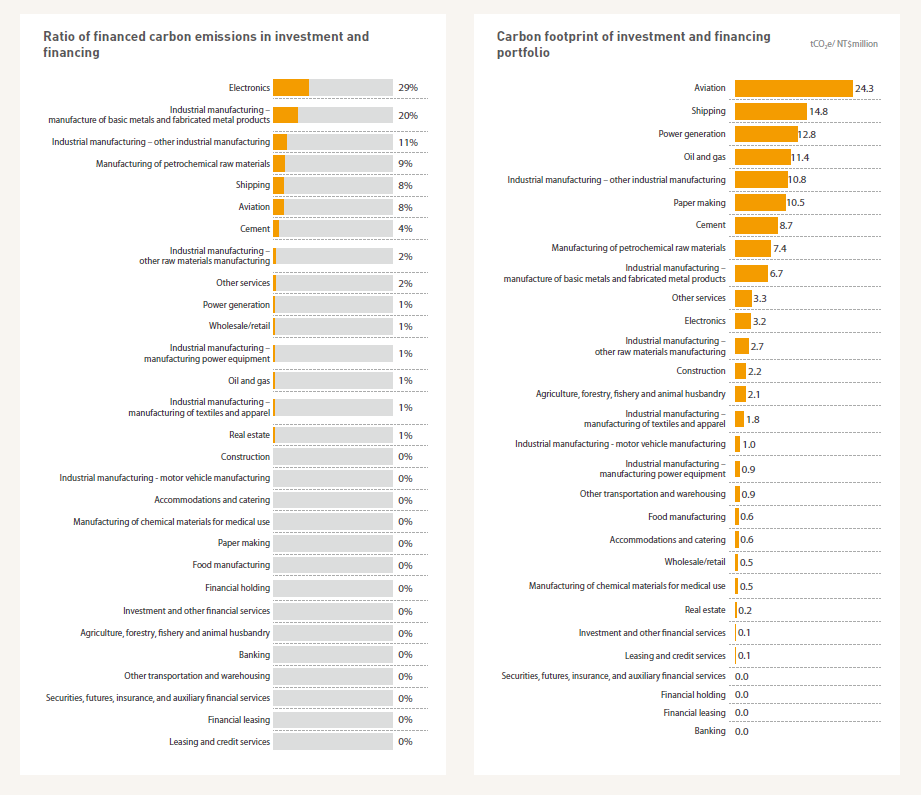Task Force on Climate-Related Financial Disclosures (TCFD)
Governance
SinoPac Holdings has set up the "Sustainable Development Committee" and the "Risk Management Committee" under the governance of the Chairman to take charge of critical issues such as the supervision of sustainable development and climate change. SinoPac Holdings has incorporated climate change risks into its "Risk Management Policy" and established the "Guidelines for the Management of Climate-Related Risks and Opportunities" to improve the management mechanisms of climate risks and opportunities. Starting from 2021, the Risk Management Division of SinoPac Holdings shall disclose the overall climate change risks in the quarterly Risk Management Report(including physical risk, transition risk related metrics) and report to the Risk Management Committee and the Board of Directors. To increase the climate risk awareness of all levels of the Group, SinoPac Holdings has incorporated climate-related targets, such as carbon emission data collection and calculation and the introduction and intensification of response to climate-related risks as a key metric for the variable remuneration of senior executives, and accounts for 10%.
- SinoPac Holdings Climate Governance Structure
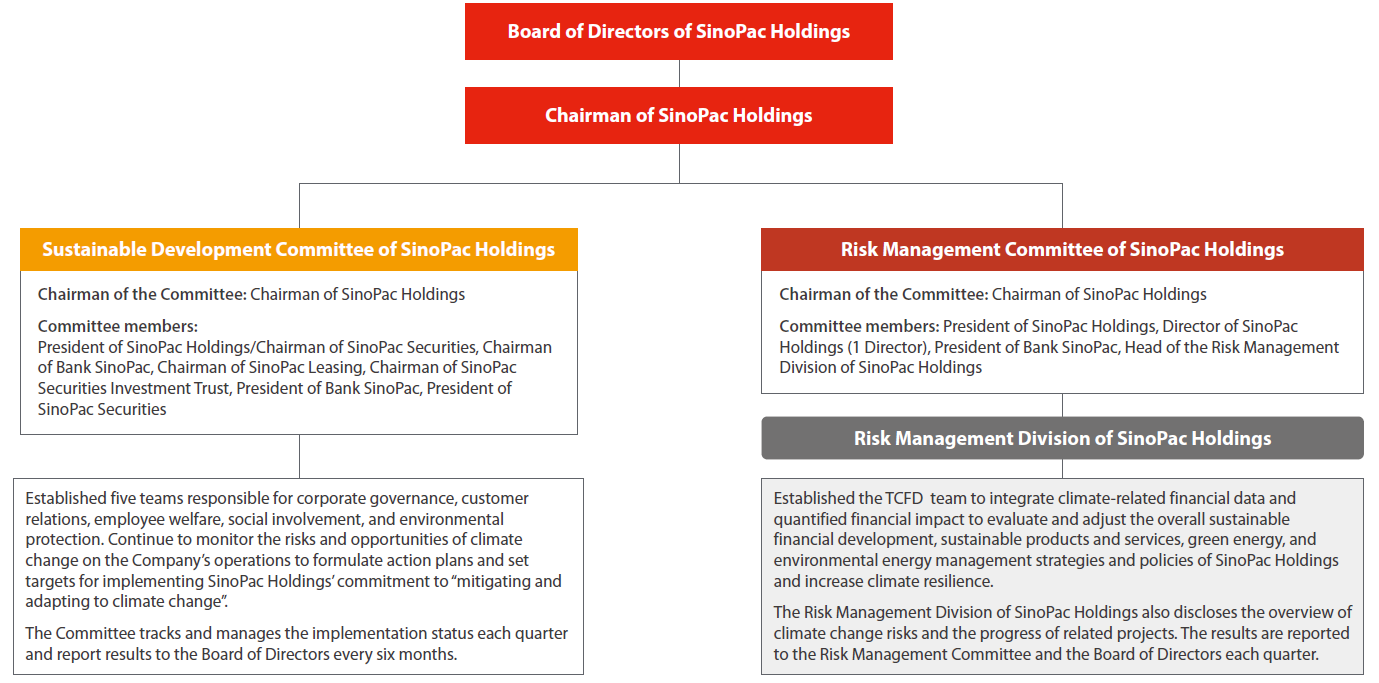
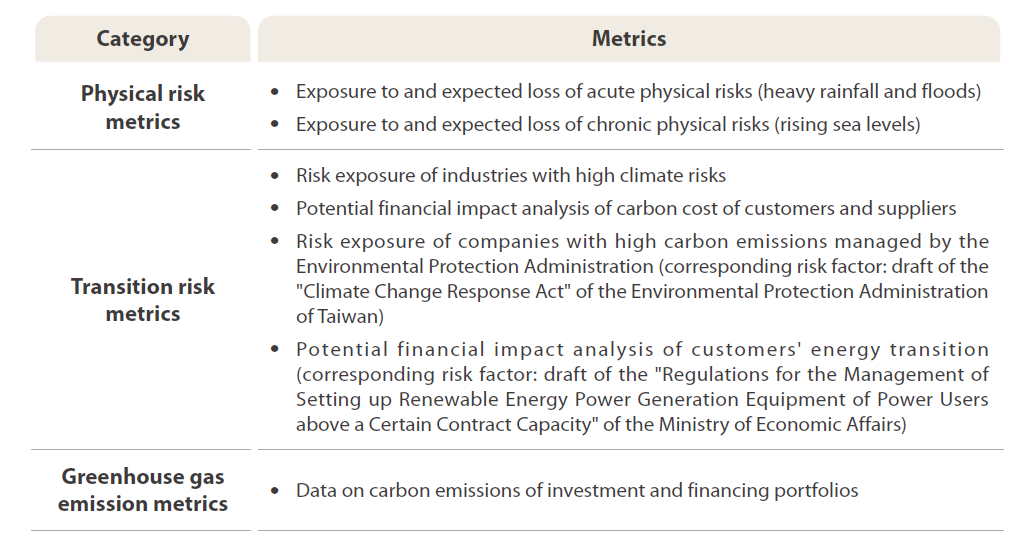
Risk Management
To establish an integrated risk management framework, SinoPac Holdings incorporated climate change risks into the Risk Management Policy and established the "Guidelines for the Management of Climate-Related Risks and Opportunities". In addition, climate change risks have been included in the "Responsible Lending Management Guidelines" in accordance with the "Guidelines for the Management of Climate-Related Risks and Opportunities". SinoPac Holdings also established the "Responsible Investment Management Guidelines", "Natural Disaster Emergency Response Guidelines", and "Supplier Corporate Social Responsibility Code of Conduct" to ensure prudent management of its credit, market, and operational risks.
SinoPac Holdings uses the three lines of defense in internal control to specify the duties and management mechanisms for the management of climate change risks on each line of defense. The management procedures for the identification of climate risks and opportunities can be divided into four steps, including compilation of a list of climate risks and opportunities, identification of risks/opportunities at the subsidiary level, identification of risks/opportunities at the group level, proposing mitigation or adaptation measures, and disclosure and communication with the public. The management procedures of climate-related risks and opportunities are explained below:
- SinoPac Holdings Management Procedures for Climate-Related Risks and Opportunities
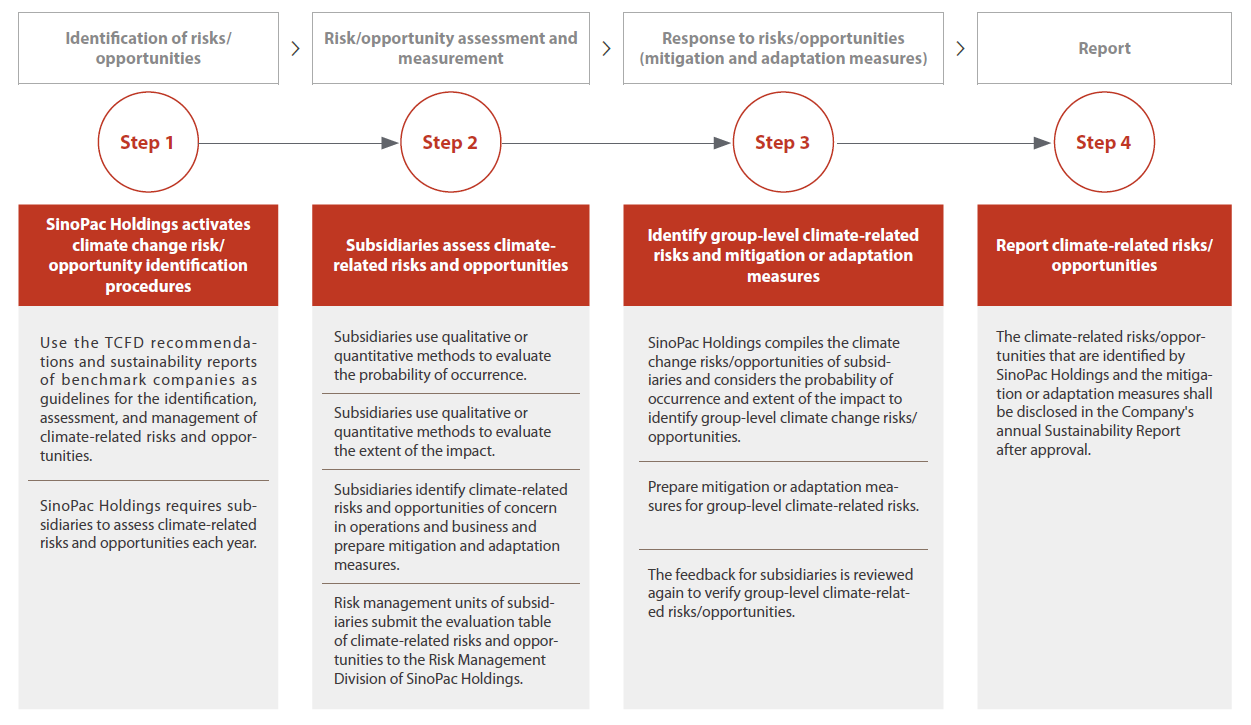
Strategy
- Identification of Climate-related Risks and Opportunities
SinoPac Holdings considered the probability of occurrence and level of impact of the 21 identified risks in terms of physical risks, transition risks, and liability risks, and identified the risk categories with relatively major effects on SinoPac Holdings.
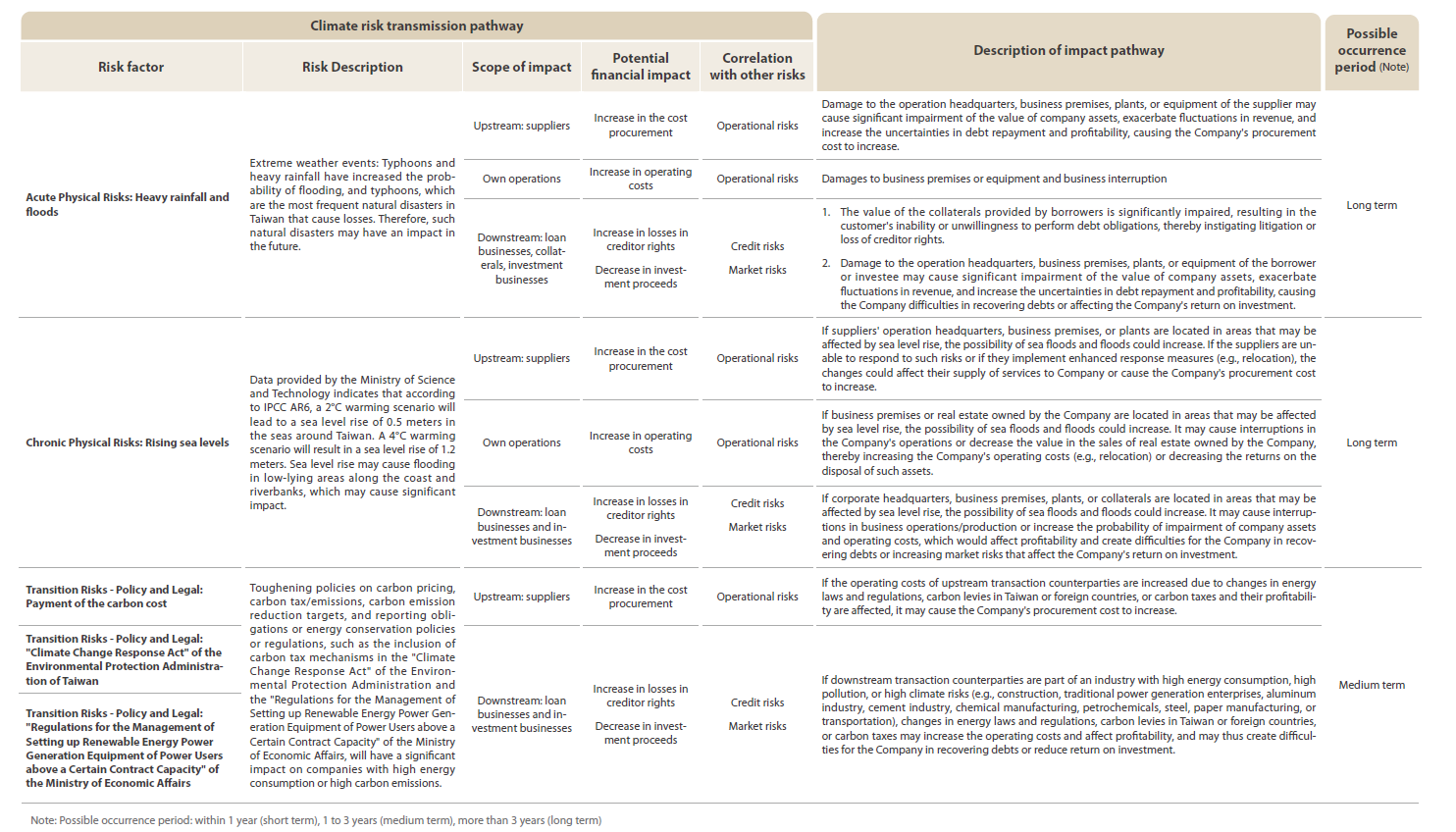

- Description of significant opportunities identified by SinoPac Holdings
SinoPac Holdings conducted scenario analysis and analysis for climate-related financial impacts of risk factors including "acute physical risks : heavy rainfall and floods", " chronic physical risks: rising sea levels", "payment of the carbon cost", "draft of the 'Climate Change Response Act' of the Environmental Protection Administration of Taiwan", and the "'Regulations for the Management of Setting up Renewable Energy Power Generation Equipment of Power Users above a Certain Contract Capacity' of the Ministry of Economic Affairs" based on the supplier and asset portfolio as of the end of 2021 to evaluate the potential financial impact on SinoPac Holdings. The description is provided in separate sections below.
- Overview of physical climate risks and scenario analysis
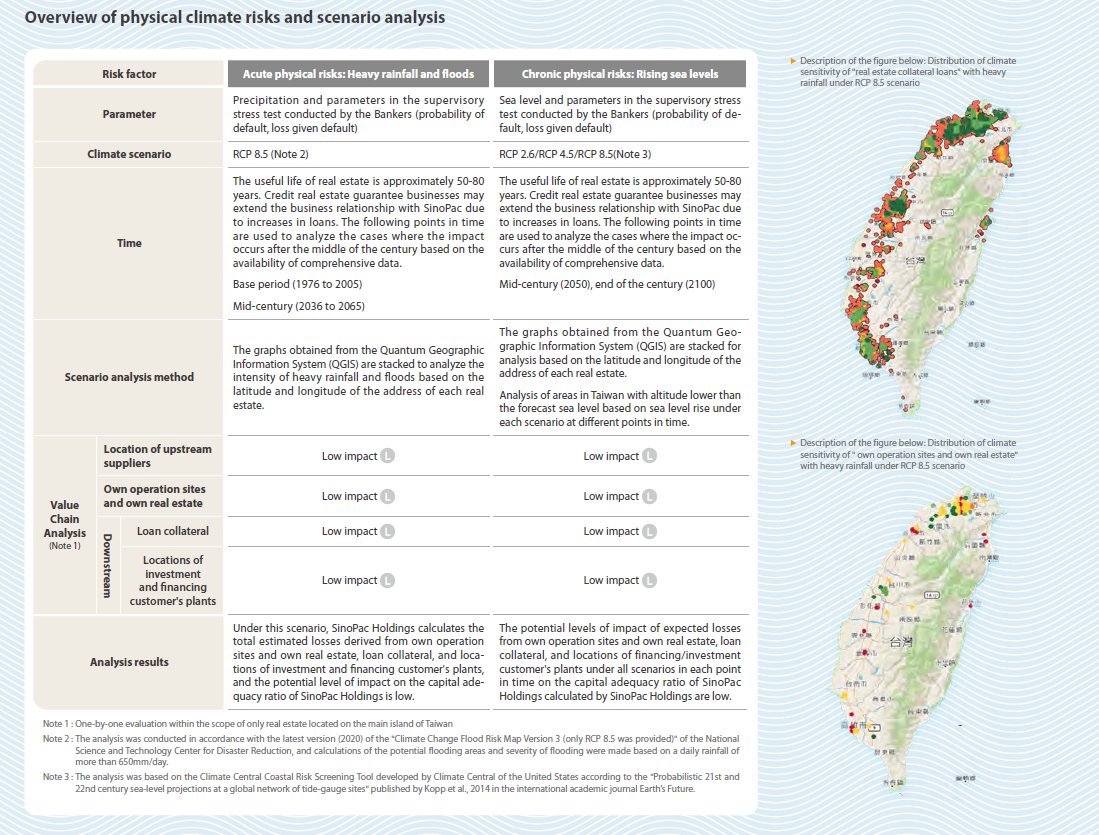
- Overview of transitional climate risks and scenario analysis
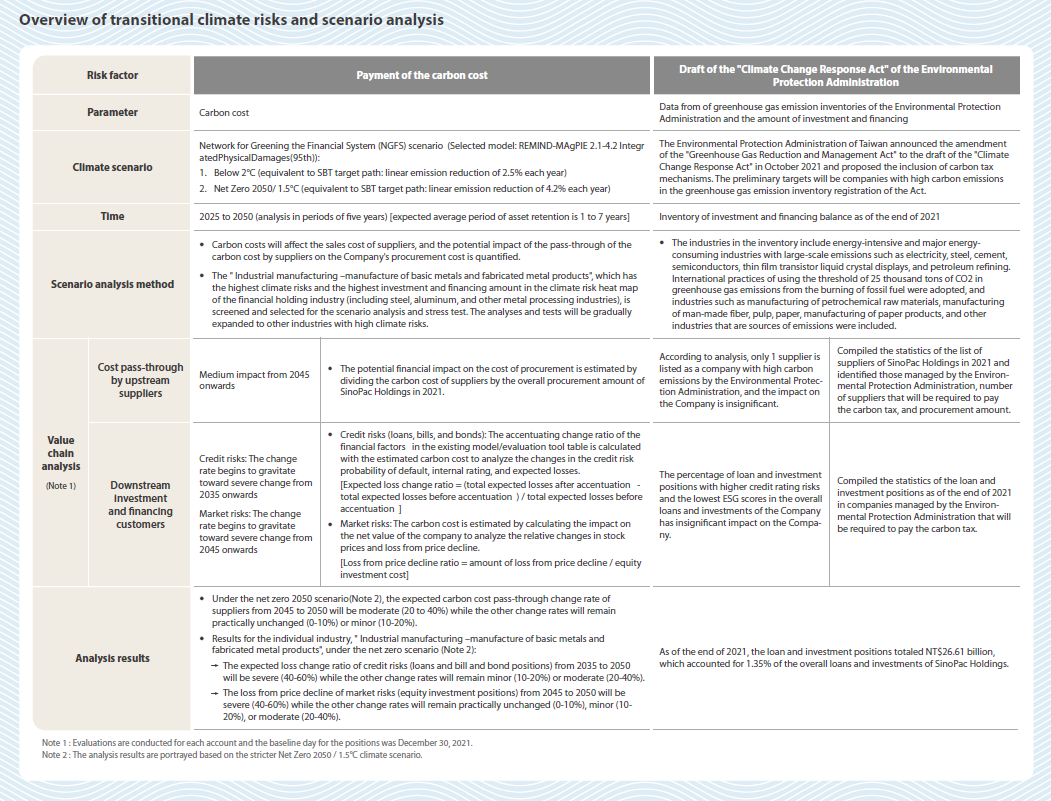
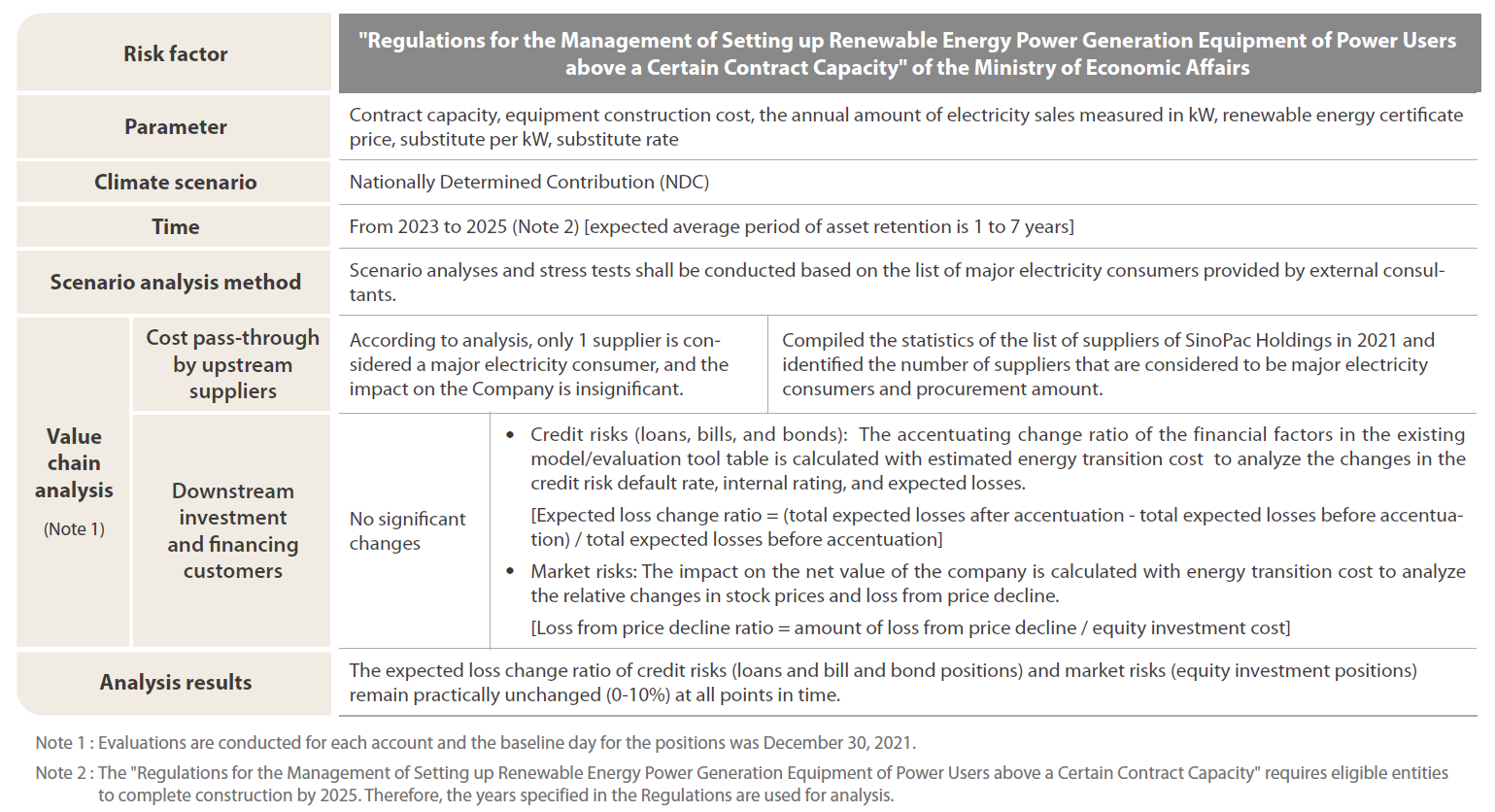
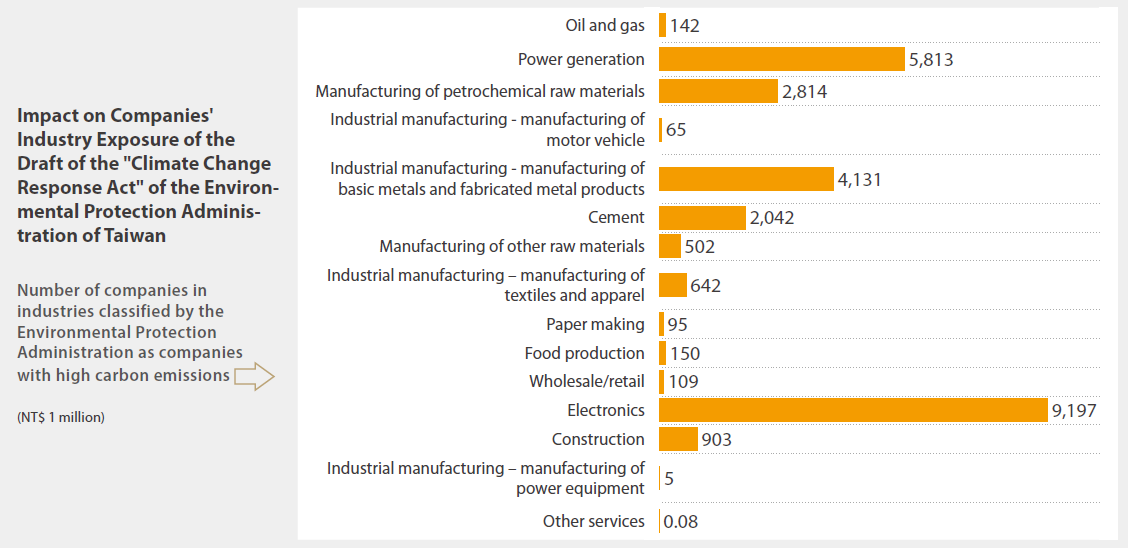
Climate-related Risk Mitigation
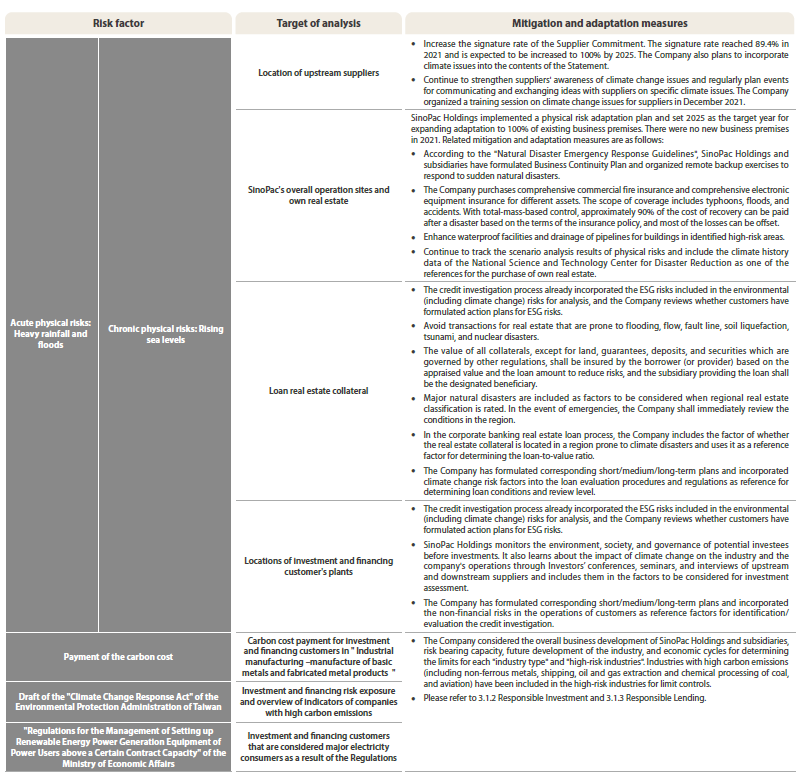
Metrics and Targets
- Climate-related metrics and targets of SinoPac Holdings
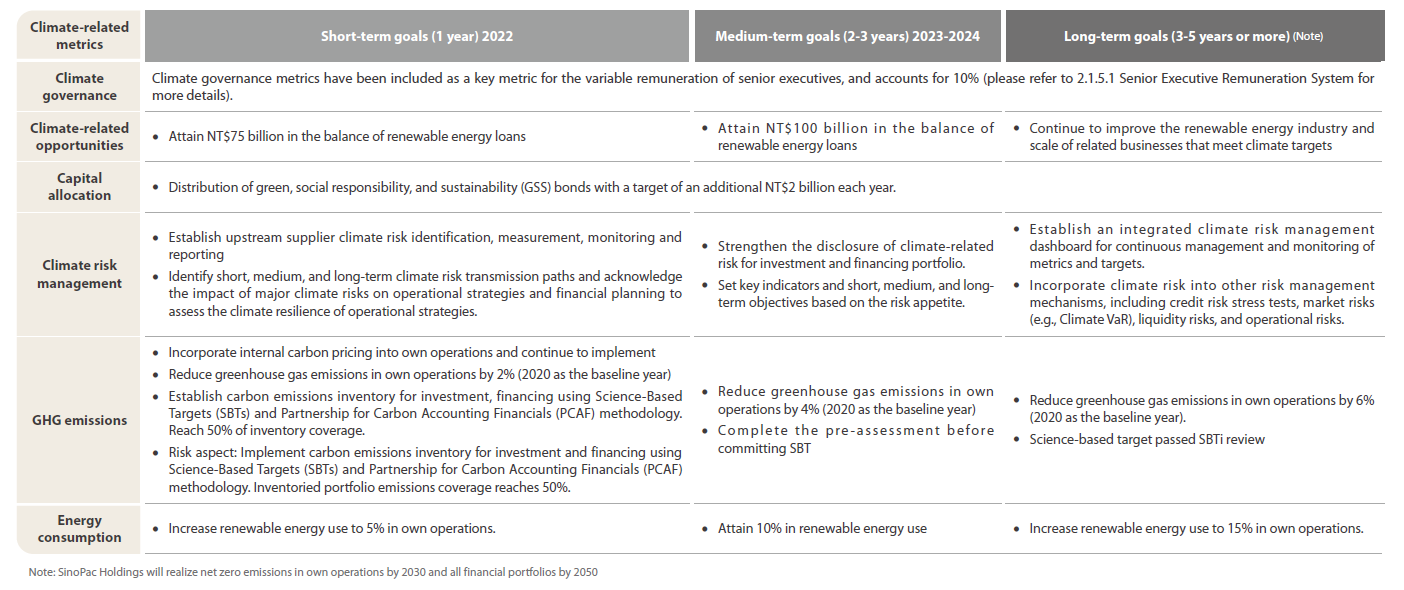
- Carbon Inventory of Investment and Financing
SinoPac Holdings adopted the "Global GHG Accounting and Reporting Standard for the Financial Industry" methodology published by the Partnership for Carbon Accounting Financials (PCAF) and conducted a carbon inventory of the investment and financing positions (excluding green energy loans/green bonds/ sustainability bonds/social responsibility bonds) in public companies listed in Taiwan (companies listed on TWSE, TPEx, emerging stocks, and public companies) on December 30, 2021. The scope 1 and scope 2 carbon dioxide emissions (tCO2e) in the overall investment and financing portfolio of SinoPac Holdings amounted to 462,013 metric tons. The carbon footprint was 2.7 metric tons of CO2 emissions per NT$1 million in the investment and financing portfolio.
